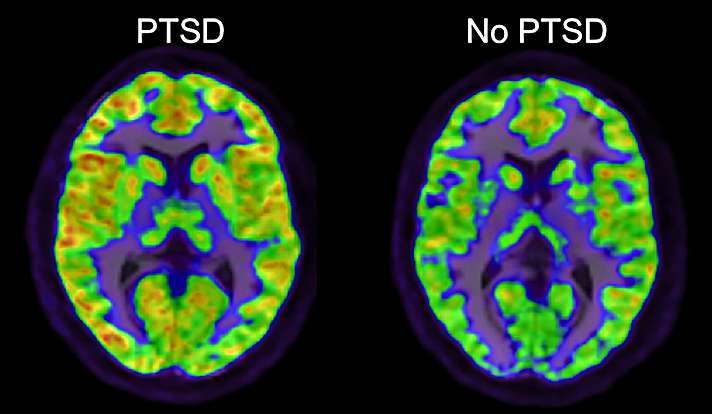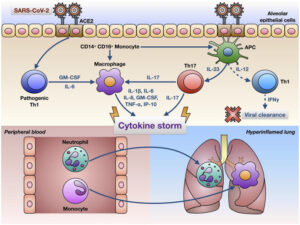Winner of the Fall 2018 StMU History Media Award for
Best Article in the Category of “Military History”
Best Article in the Category of “Science & Technology”
Charles Meyers, a Medical Officer, introduced the term “Shell Shock” to explain symptoms of Post Traumatic Stress Disorder (PTSD) displayed by military after combat in World War I (WWI). Soldiers often experienced symptoms including fatigue, tremor, confusion, nightmares, impaired sight, and impaired hearing. Meyers assumed that these symptoms were caused by the soldiers’ exposure to exploding shells, not necessarily the trauma they were witnessing or going through. In these years, symptoms of widespread PTSD were considered “weak” traits for soldiers by their colleagues and bosses. Even society as a whole started to view these symptoms negatively, which led to the destruction of their relationships after the Shell Shocked soldiers arrived home.1
Military gave Shell Shock victims no sympathy. When soldiers were dismissed from their duties, they were given labels such as “cowardice” or “emotionally weak.” These labels led to soldiers being targeted for abuse from their own side, as well as mock trials in which they were convicted. The pardons they received weren’t honorable, so they were often ashamed of their disorder, which led to more mental issues among the soldiers like depression, anxiety, and even suicide.2

New treatments flipped understandings of how World War I caused drastic changes in the behaviors of these men. Treatment for Shell Shocked victims before Arthur Hurst’s “miracle treatments” were very harsh, as they were often treated with Electroconvulsive Therapy, emotional deprivation, shaming, and solitary confinement. Some of the lesser treatments were hypnosis, massage, rest, and dietary treatments.3
Arthur Hurst primarily used occupational therapy to treat Shell Shocked patients, treating them as humanely and sympathetically as possible. This dignified care allowed for the increased numbers of “saved” soldiers, as they found ways to overcome the abuse and the labels given to them after their dishonorable discharges. Hurst’s treatments became iconic after the Newton Abbott’s Seale Hayne in Devon. Hurst’s approach allowed for 90% of Shell Shocked soldiers to be cured after only a single session.4

Modern day treatments, consist of therapy, as well as new medicines that aid in the control of the symptoms. According to Michael James, a pharmacist, there are Selective Serotonin Reuptake Inhibitors (SSRIs) that block the re-uptake of serotonin in the brain and help with sleep disorders, nightmares, and decreases intrusive thoughts. James also informed me that Serotonin Norepinephrine Reuptake Inhibitors (SNRIs) block the re-uptake of serotonin and norepinephrine in the brain which also decrease intrusive thoughts and provide aid for sleep disorders and nightmares.5
Hurst’s approach led to a change of heart and a consensus to the overall approach by society as a whole. Now, Veterans Affairs, also known as the VA, has a large program that provides aid to veterans with PTSD. However, this evolution of PTSD has not only been beneficial to veterans, but it has also allowed for a more diverse diagnosis of PTSD, in which it is more understood that other people, in addition to veterans, can also experience PTSD. PTSD can be caused from any sort of trauma including car accidents, violent crimes, and domestic violence. Individuals can even develop PTSD from having someone important abandon them as well. The DSM-5 has set a variety of symptoms for PTSD because just like any other disorder, it affects every individual differently. This document allows all individuals to gain access to the tools and help they need to recover from or live with PTSD.6

- Caroline Alexander, “The Shock of War,” Smithsonian Magazine, September 2010, https://www.smithsonianmag.com/history/the-shock-of-war-55376701/. ↵
- “Shell Shock,” BBC Inside Out, March 3, 2004, http://www.bbc.co.uk/insideout/extra/series-1/shell_shocked.shtml. ↵
- “Electroconvulsive Therapy: A History of Controversy, but Also of Help,” The Science Explorer, January 13, 2017, http://thescienceexplorer.com/brain-and-body/electroconvulsive-therapy-history-controversy-also-help; “Arthur Hurst: The Man Who Filmed Shell Shock,” BBC Radio 4, http://www.bbc.co.uk/programmes/articles/4VqPtrjsgcPKtgmYc2M5vXz/arthur-hurst-the-man-who-filmed-shell-shock. ↵
- “Arthur Hurst: The Man Who Filmed Shell Shock,” BBC Radio 4, http://www.bbc.co.uk/programmes/articles/4VqPtrjsgcPKtgmYc2M5vXz/arthur-hurst-the-man-who-filmed-shell-shock. ↵
- Email with Michael James, September 11, 2018. ↵
- Pete Walker, From Surviving to Thriving (Scotts Valley, CA: CreateSpace Independent Publishing Platform, 2013), 13-14. ↵



160 comments
Lynsey Mott
I think its so great that someone; Arthur Hurst, helped those who had PTSD from the war, and I really think it had helped those not to kill themselves or hurt themselves. Those who have helped our country in the war and came back changed, needed help instead of getting shot down or not treated as though they are a hero, were finally getting someone to come in and say, I am here to help, what do you need?
Eric Ortega Rodriguez
Wow, this article was extremely fascinating in the sense that it talks about something I do not hear a lot of today, which is PTSD. I admire Arthur Hurst for treating Shell Shocked patients with sympathy. I also found it bizarre that Shell Shock soldiers were seen as emotionally weak. I hope that, as time progresses, ways to completely recover from PTSD are found. Overall, this article was very well written with an original topic selection.
Matthew Wyatt
It would be nice to say that negative stigmas for military personnel with PTSD are a thing of the past, but we’re not there yet. Service members are regularly criticized by both peers and supervisors for reporting their psychological symptoms. We’ve made some progress, but there’s still a long way to go. This article highlights how much the diagnosis has improved since the days of “shell shock.”
Julissa Cantu
While this article had a lot of information, I was a little confused as to what was the point besides that medical research has developed in the most recent years and that it is recognized more as a legitimate mental illness. The moral of the story was very noble, there just should have been a better connection from start to finish.
Brianna Ford
This is a very great article and was well written, congratulations on the nomination it is well deserved! It is so heartbreaking that some people think Shell Shock soldiers are cowards and just weak human beings, when In reality they do not know what they have been through while they are deployed. Arthur Hurst is a well respected man who had sympathy and the actual heart to help recover soldiers through the use of occupation therapy. Very good read.
Valeria Perez
I was actually watching Downton Abbey today and the topic of shell shock came about, as one of the characters had just returned from war (World War I) and as soon as they mentioned it, it reminded me of this article. It was interesting to see how the information that the author wrote about translated into a “real-life scenario”. People really didn’t know how to handle PTSD, it is good that we have learned better ways to treat people
Christopher Hohman
Nice article. It is so good that men like Arthur Hurst made advancements in the treatment for PTSD. All people who suffer trauma deserve to be treated with kindness and respect. It is so sad that we, as a society, were ignorant for so long. It is sad that we treated these soldiers so wrongly, but we should always make an effort to try and do what is best. Not shame them, and make them think that it is their fault. Our soldiers are heroes not cowards
Jose Fernandez
I always find military stories interesting, and I can see why this article is nominated for an award. Your topic is very interesting. I think it is sad that people got mistreated so badly if they had PTSD. I have a relative that suffers from this condition, and it is very serious. I am just glad that nowadays there are several treatments and ways to help veterans. I really liked the article and I think this a topic worth reading and investigating. The article is well structured and well written. Good luck in the awards.
Engelbert Madrid
I think it’s heartbreaking that some people will consider Shell Shock soldiers as cowards and emotionally weak. But thanks to Arthur Hurst, an army major, had the sympathy and heart to help soldiers to recover from the Great War. Fortunately, some soldiers were able to recover from the war by the help of occupational therapy, which helped them reduce their depression and anxiety. I enjoyed reading this article, because it was informative and clear to understand the topic of the writer.
Mariah Garcia
I didn’t know that PTSD was first introduced as shell shock. It is an interesting article because when soldiers would come back from war they would be called cowards. I am appalled that anyone would call a soldier weak or a coward after they went, fought, and came back from war. Though it is fortunate that Arthur Hurst was able to develop treatments for PTSD that were successful. Now PTSD isn’t just for those who fought in combat, but range from abandonment, car accidents, violent crimes, etc. Its effects are different for everyone and now this treatment can help recover or live with PTSD. I think that this was a break is medical treatment and I just hope it continues to help many in the future.